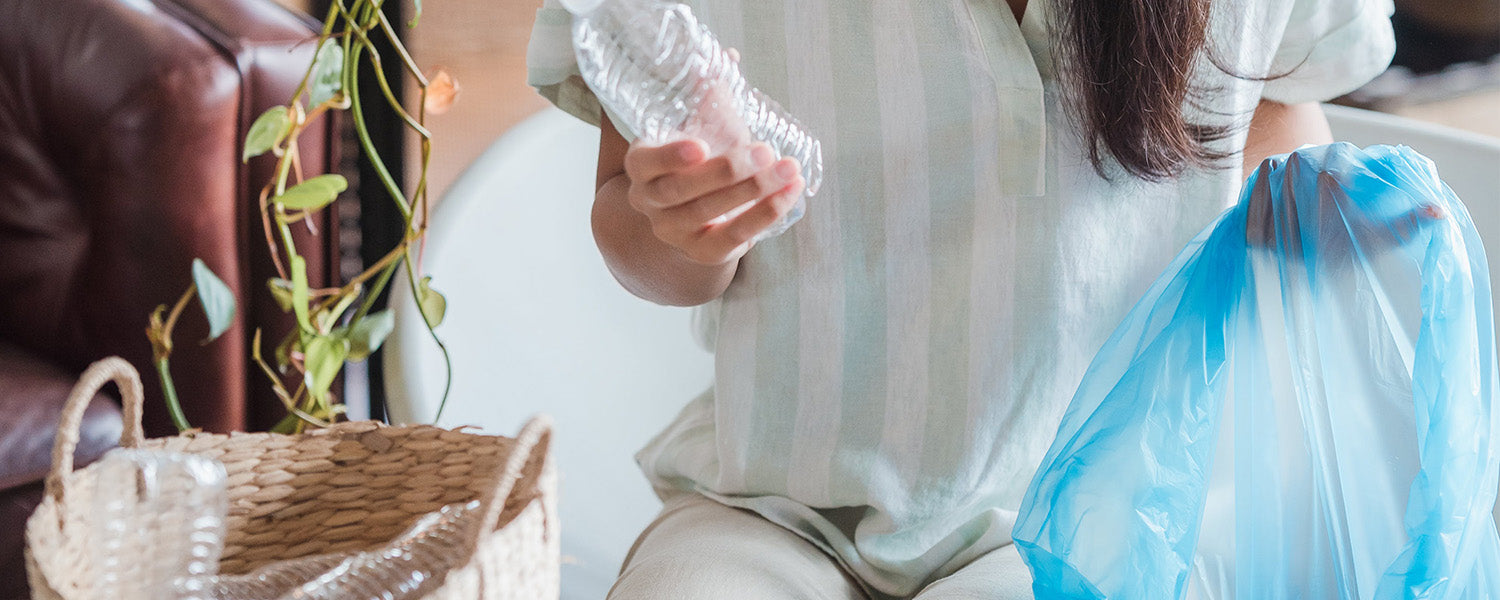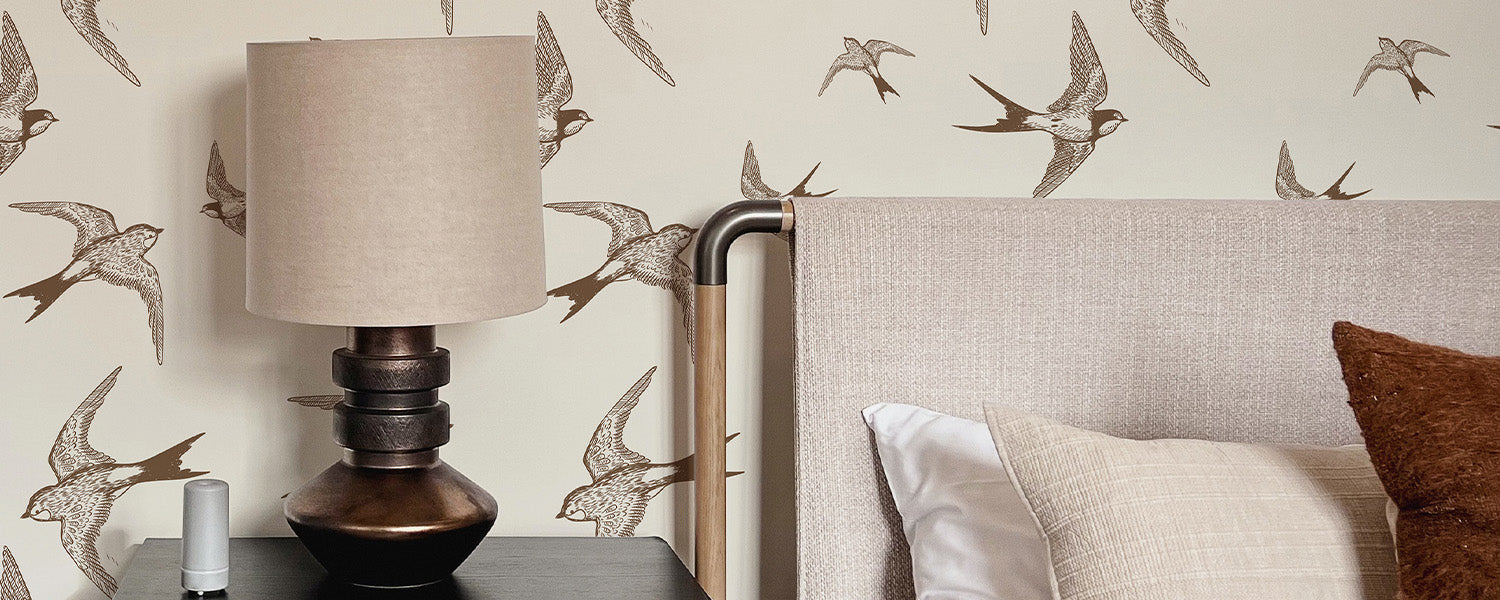Sustainable Interior Design: Eco-Friendly Tips for a Greener Home
When it comes to interior design, the choices you make go beyond mere aesthetics – they have a significant impact on the planet. Opting for sustainable design isn't just about benefiting the Earth; it is also about creating a healthier living environment. In this article, we've outlined guidelines and tips for creating a greener home so you can start making eco-friendly design choices as soon as possible. Keep reading to learn more!
Do This Before You Buy Anything New For Your Home!
Reduce and Reuse First, Buy Last
The most sustainable interior design maximizes existing resources first. Reducing consumption and promoting reuse is important as it slows down the demand for new product creation. This, in turn, promotes respect for and saves the raw materials needed to create new things.
Before you rush to buy brand new furniture or decor, consider repurposing what you already have or buying pre-owned pieces. If you can't avoid buying new things for your home, the next best option is to buy second-hand. Explore thrift stores, flea markets, and online marketplaces to find furniture and decor items. You may be surprised by the unique finds!
Upgrade Through Upcycling
If using what's already there doesn't quite inspire you, consider giving a new life to old items. Upcycling is a creative and sustainable way to decorate your space.
You may give an old dresser a fresh coat of paint or use peel-and-stick wallpaper to add a unique touch to it. With upcycling, the only limits are your imagination and budget.
You can hire professionals to bring your vision to life or you can do it yourself. Either way, it's a win-win situation – less waste in landfills and a personalized touch to your home.

Dispose of Things Responsibly
Part of sustainable living involves responsible disposal of unwanted and broken items. Instead of contributing to landfills, sell or give away usable items you no longer need. Specialized online platforms and social media groups make it easy to find new homes for your pre-loved possessions.
Additionally, to see what can be recycled and how to do it correctly, refer to your local waste management providers. For example, electronics must not be thrown away with general waste. Instead, they should be collected separately to prevent environmental hazards.
Do Your Research Before Buying
Not everything marketed as sustainable lives up to its eco-friendly claims. It's crucial to conduct research before making any purchase.
Consider the entire lifecycle of a product, from manufacturing to disposal. Ask questions like, "Can it be recycled? Can a broken part be replaced? How long or how many times will I actually use it?"
Look for certifications and transparent supply chain information. These are often good indicators of product sustainability.

Choose Durable, Quality Materials
Regardless of whether you buy brand-new or second-hand things for your home, prioritize quality, longevity, and natural materials. These characteristics are a cornerstone of eco-friendly interior design.

Sustainable Floors
Start from the ground up by opting for sustainable flooring materials such as hardwood, bamboo, cork, or reclaimed wood. Also, concrete floors may surprise you as a sustainable and durable option. All in all, do your best to avoid synthetic materials like vinyl and laminate, and synthetic carpets.
When choosing durable flooring, you'll want to consider how intensely it'll be used. Especially with children in your home, you'll want floors that can sustain many blows and are easy to clean. Similarly, plan for the presence of pets and indoor shoe use.
Eco-Friendly Wall Coverings
Walls and ceilings cover the largest area in your home, so what you choose to put on them matters.
Consider eco-friendly wallpaper options. Companies like ours produce wallpapers using certified, high-quality materials that meet safety standards. For example, our PVC-Free wallpapers eliminate harmful emissions and use original Epson ECO inks. This ensures a vibrant color spectrum without compromising your health or the environment.
Plus, the print-to-order method, which we use, is one of the best ways to cut product waste and add unique designs to your walls.
If wallpaper is not your first choice, use paints and finishes that are low in volatile organic compounds (VOCs). These compounds can release harmful toxins into the air. Many companies now offer environmentally friendly paint options that are both beautiful and safe.

Furniture and Decor That Lasts
Pay attention to how well the item is constructed. This is a good indicator of how long it will last you. For example, if a bookshelf is at all wobbly upon purchase, it's likely to fall apart soon.
When selecting furniture, opt for pieces crafted from reclaimed wood, bamboo, or recycled metal. These materials have a lower environmental impact and they cut the need for replacements as they last longer. Plus, if you take good care of them, they'll look brand new for a long time.
Another good strategy is to look for items that look timeless, instead of trendy. Aesthetics promoted on social media can be a source of inspiration to develop your personal style. However, following every trend and new product hype is likely to contribute more to the landfill than your beautiful home.
Sustainable Bedding for a Good Night's Sleep
When it's time to choose your bedding, opt for organic cotton, linen, or bamboo fiber sheets. These materials are produced without the use of harmful chemicals, promoting a healthier sleep environment. They also tend to have better thermoregulating qualities than synthetic fibers.
Pro tip - pay attention to the thread count and felt durability of the material. Just because the fiber is natural and organic, doesn't mean it's high quality. A thread count of 200-300 usually ensures that the bed sheets are good quality, soft, breathable, and durable. For linen, the optimal thread count is 80-140. Do your research to decide what's optimal for your comfort and style.

Eco-Friendly Curtains and Blinds
Opt for curtains and blinds made from sustainable materials like organic cotton, linen, or bamboo. These materials have a lower environmental impact and they can look more chic than their synthetic counterparts.
Also, make sure your window treatments are energy-efficient. This will help regulate room temperature and reduce the need for excessive heating or cooling.
Efficiency
Efficient Heating and Cooling
First off, ensure your home is well-insulated to reduce the need for excess heating or cooling.
Invest in a smart thermostat to regulate your home's temperature efficiently. This saves energy and reduces your utility bills. Good for the planet and your bank account!
Underfloor heating is another way to make your home more energy-efficient. And it frees up space because you don't need to install radiators!
Smart Water Usage
To save water as well as your time, a dishwasher is a smart investment to consider. Estimations vary depending on the source, but reportedly, with optimal use, it can cut water use up to 80% compared to hand washing!
Another way to save water in your home is to install water-efficient faucets, showerheads, and toilets.

Sustainable Lighting Options
If possible, maximize natural light from windows with the help of mirrors and light window treatments.
Illuminate your space with energy-efficient LED bulbs. They last longer and consume significantly less energy than traditional incandescent bulbs.
If you enjoy candlelight, make sure to use paraffin-free candles. Paraffin candles are made from petroleum and they're a hazard to your health and the environment. Try plant-based candle wax beads that can be poured into any vessel and don't leave ugly residues.
Green Electronics
When it's time to upgrade your electronics, choose energy-efficient options. Look for appliances and gadgets with the ENERGY STAR label. This will ensure they meet strict efficiency guidelines. The benefits - reduced energy bills and a smaller carbon footprint.
Before buying a new appliance, be realistic and evaluate whether you need it and how often you'll use it. Avoid trending products as they're likely to lose their appeal once a new product arrives.
When you're choosing between appliances, prioritize multifunctionality. Reducing the number of gadgets in your home will save you space and energy.
Plan for Eco-friendly Habits
Designing your interior with our tips in mind is a great step toward sustainability. However, the everyday habits you practice in your home will have an even bigger impact.
To make your home a green lifestyle haven, plan enough space for recycling, efficient and organized food storage, and home cooking. This will help you take care of the planet while avoiding an aesthetic disaster.
Plus, an organized food storage space will allow you to keep better track of your ingredients. This will help reduce the volume of unnoticed and spoilt food you throw out.
Summary
Sustainable interior design is not merely a trend; it's a responsibility we owe to our planet. And there is so much you can do to make a positive impact. We believe that style and sustainability can coexist in harmony, and we hope these tips will help you make choices that reflect both.


























